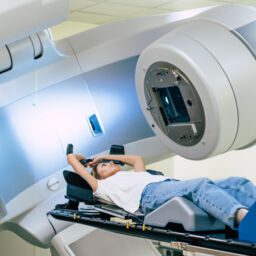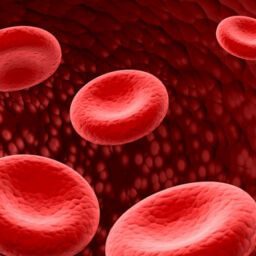
At the heart of every woman’s concerns, the fight against female cancers remains a top priority. In this informative article, we will explore in depth the five most formidable female cancers, focusing on prevention, screening, and available treatments. From proactive prevention to recent advances in therapies, every crucial aspect will be highlighted to equip you with essential knowledge. Did you know that prevention and early detection can play a decisive role in the prognosis of female cancers? Stay informed and discover how you can proactively take charge of your health. Get ready to dive into a detailed guide providing you with the tools needed to understand, prevent, and fight these silent threats.
What are the 5 most formidable female cancers?
The most common female cancers include breast cancer, cervical cancer, ovarian cancer, uterine cancer, and lung cancer. Each of these cancers has distinct characteristics, risk factors, and challenges in terms of screening and treatment. Breast cancer, for example, is the most common cancer in women in many countries. It is often detected through regular screening but can sometimes go unnoticed in its early stages. Raising awareness about self-examinations and regular mammograms is crucial for early detection.
Cervical cancer, although less common, is also a serious concern, especially if not detected early. Screening via cervical smears and vaccination against the HPV virus are effective preventive measures that can significantly reduce the incidence of this cancer. Ovarian cancer, on the other hand, is often diagnosed at an advanced stage because its symptoms are frequently vague and overlooked. It is vital to be aware of the signs and consult a doctor if unusual changes occur.
Uterine cancer, also referred to as endometrial cancer, affects the lining of the uterus and is the most common gynaecological cancer. Women should be vigilant about abnormal bleeding and other symptoms. Finally, lung cancer, while it also affects men, is becoming increasingly prevalent in women, particularly those who smoke or are exposed to environmental pollutants. Increased awareness of these cancers can help save lives.
The importance of preventing female cancers
Prevention is a key factor in combating female cancers. By adopting healthy behaviours and undergoing regular screenings, women can significantly reduce their risk of developing these diseases. Awareness of risk factors, such as smoking, alcohol consumption, and obesity, is essential. A healthy lifestyle can lower the incidence of several types of cancer.
Prevention programmes, such as vaccination campaigns against HPV for cervical cancer, also play a crucial role. By educating young women about the importance of vaccination and screening, thousands of cancer cases can be prevented. Regular check-ups, such as mammograms for breast cancer and smears for cervical cancer, help detect abnormalities at an early stage, increasing the chances of recovery.
Additionally, prevention includes community initiatives such as workshops on nutrition and physical activity. Encouraging women to participate in exercise programmes and adopt a diet rich in fruits, vegetables, and whole grains can significantly impact their health. By investing in prevention, we can not only reduce the number of new cases but also improve the quality of life for women worldwide.

Screening Methods for Cancers in Women
Screening is a fundamental tool in the fight against women’s cancers. It helps detect abnormalities before they develop into invasive cancers. For breast cancer, mammograms are recommended for women starting from the age of 40, although some guidelines suggest earlier screening for women with a family history of the disease. Mammograms can identify tumours that cannot be detected during a physical examination.
For cervical cancer, the Pap smear is an effective method for detecting cellular changes before they become cancerous. It is generally advised to begin screening at the age of 21 and continue every three years until the age of 29, then every five years in combination with the HPV test up to the age of 65. This strategy has significantly reduced the incidence of cervical cancer in countries where it is implemented.
Screening for ovarian cancer is more complex, as no widely recommended routine test exists. Women with risk factors, such as a family history of the disease, may benefit from more frequent evaluations, including pelvic ultrasounds or blood tests for the CA-125 marker. Educating women about symptoms, such as persistent bloating, abdominal pain, or changes in appetite, is also crucial for early detection.
Treatment Options for Women’s Cancers
Treatment options for women’s cancers vary depending on the type of cancer, its stage, and the patient’s overall health. For breast cancer, treatments include surgery, radiotherapy, chemotherapy, and targeted therapies. Surgery may involve a lumpectomy or mastectomy, depending on the extent of the disease. Radiotherapy is often used after surgery to eliminate any remaining cancer cells.
Cervical cancer can also be treated with surgery, particularly if detected at an early stage. Chemotherapy and radiotherapy are commonly used for more advanced stages. For ovarian cancer, standard treatment typically involves a combination of surgery and chemotherapy. Advances in targeted therapies and immunotherapy are offering promising new options for patients.
Cancers of the uterus and lung also require varied approaches. Uterine cancer treatment may involve a hysterectomy and hormonal therapies. For lung cancer, treatment options can include surgery, chemotherapy, radiotherapy, and targeted therapies. It is vital for each patient to work closely with their medical team to develop a personalised treatment plan.
Risk Factors for Women’s Cancers
Understanding the risk factors associated with women’s cancers is essential for prevention. Genetic factors, such as mutations in the BRCA1 and BRCA2 genes, increase the risk of breast and ovarian cancer. A family history of cancers may also indicate a genetic predisposition. Women should be aware of their family history and consider genetic screening if necessary.
Lifestyle factors also play a significant role. Smoking is a major risk factor for lung cancer, while an unbalanced diet high in saturated fats and low in fruits and vegetables can increase the risk of various cancers. Obesity is another significant risk factor, particularly for uterine cancer. Women should aim to maintain a healthy weight through a balanced diet and regular physical activity.
Finally, hormonal factors can also influence the risk of women’s cancers. For instance, long-term use of oral contraceptives may offer protective effects against ovarian and cervical cancer but could also be associated with a slightly increased risk of breast cancer in some populations. It is crucial that women discuss the risks and benefits of contraception with their doctor.
The Importance of a Healthy Diet in Cancer Prevention
A healthy diet plays a crucial role in preventing female cancers. Studies show that a diet rich in fruits, vegetables, whole grains, and lean proteins can reduce the risk of many types of cancer. Antioxidants found in fruits and vegetables, such as vitamins C and E, help combat free radicals, which can damage cells and lead to cancer.
Additionally, it is essential to limit the consumption of processed foods and those high in saturated fats, as well as to reduce added sugars. An unbalanced diet can lead to obesity, a major risk factor for several cancers, including breast and uterine cancer. It is therefore recommended to adopt a varied and balanced diet, rich in nutrients and low in empty calories.
Finally, staying hydrated and limiting alcohol consumption is important. Studies show that even moderate alcohol intake can increase the risk of certain cancers, particularly breast cancer. By incorporating healthy eating habits into their daily lives, women can not only improve their overall health but also reduce their risk of cancer.


Advances in Research on Women’s Cancers
Research on women’s cancers is progressing rapidly, with promising developments in screening, treatments, and understanding the mechanisms of the disease. Clinical studies on new targeted therapies and immunotherapies are showing encouraging results. These treatments aim to specifically target cancer cells while sparing healthy ones, potentially resulting in fewer side effects and an improved quality of life for patients.
Furthermore, research continues to explore biomarkers that can help predict disease progression and treatment response. For instance, studies on the genomic profiles of tumours are enabling personalised treatments based on the genetic characteristics of a patient’s cancer. This paves the way for more effective and tailored therapies, increasing the chances of success.
Finally, raising awareness about research and encouraging participation in clinical trials is essential. Many women are hesitant to engage in trials, often due to a lack of information. However, these studies can provide access to innovative treatments while contributing to scientific advancements. By staying informed and participating, patients can not only benefit from potentially life-saving treatments but also help advance the fight against women’s cancers.
Conclusion and Message of Hope
The fight against female cancers is a significant challenge, but it is important to remain hopeful. Thanks to advancements in science, awareness, and education, more and more women are surviving these illnesses. Prevention, early detection, and appropriate treatments are key elements in improving outcomes. Every woman has the power to take proactive steps to protect her health.
It is vital to remember that support is always within reach. Whether through community resources, support groups, or healthcare professionals, women are not alone in their fight. By sharing their stories and supporting one another, they can build a strong and resilient community.
Finally, every day, researchers are working tirelessly to discover new treatments and improve care. Advances in research and targeted therapies provide a promising future. By staying informed and engaged, women can contribute to positive change in the fight against female cancers, turning fear into hope.








